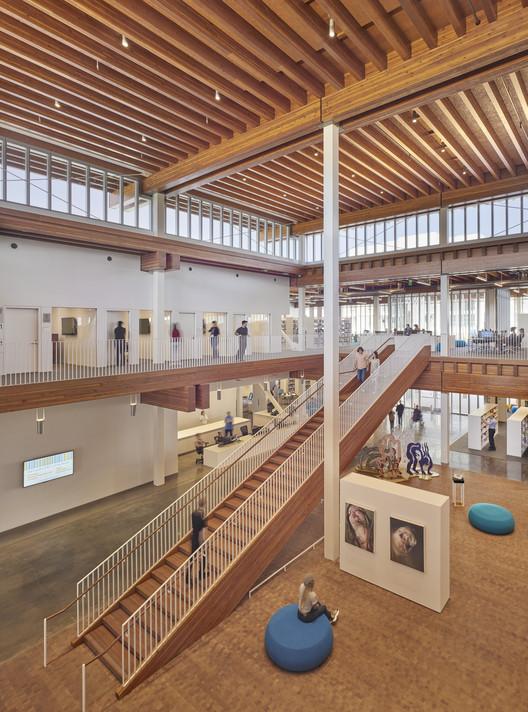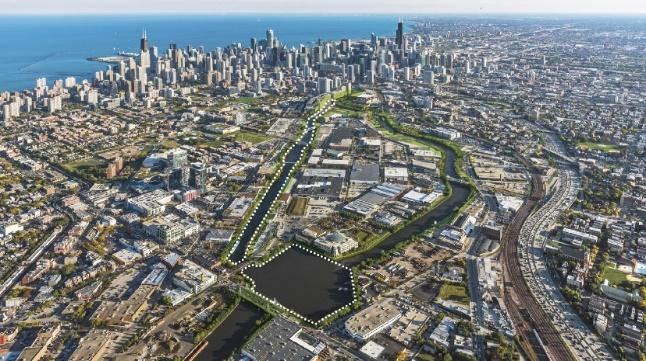Introduction
It is important to note that the problem of climate and environmental pollution poses a global threat to humanity, which is why combatting it is significant. Design activism is mainly done by environmentalists and is a powerful method of spreading the increase of awareness as well as offering effective solutions. Thus, the approach used by design activists is an effective way to environmentalism, sustainability, and climate change action.
Overview: Key Terms and Definitions
In order to comprehensively discuss the subject of interest, it is useful to define the key terms first. The environment is the complex of physical, chemical, and biotic factors (such as climate, soil, and living things) that act upon an organism or an ecological community and ultimately determine its form and survival (Merriam-Webster, 2022a, para. 2). Design refers to “a method of human expression that follows a system of highly developed procedures in order to imbue objects, performances, and experiences with significance” (Philips, 2022, para. 17). Activism is “a doctrine or practice that emphasizes direct vigorous action especially in support of or opposition to one side of a controversial issue” (Merriam-Webster, 2022b, para. 1). Environmentalism is about “advocacy of the preservation, restoration, or improvement of the natural environment” (Merriam-Webster, 2022c, para. 2). Thus, there is a movement and awareness about the issues of climate change and environmental preservation.
Design activists are contemporary designers who undertake projects based on their ethical concerns and a sense of social responsibility. Design activism is an activist practice focused on using design approaches to communicate support or opposition towards a specific issue (Busch, 2022). Climate change is a complex long-term change in patterns of climatic events accompanied by gradual shifts in weather conditions and flows globally and locally (Dietz et al., 2020). Thus, the objects, communications, spaces, and systems that they design, improve lives and benefit communities and the environment.
The Floating Forest
Environmentalism can be successfully and effectively integrated into urbanized areas. In other words, making cities more environmentally friendly does not require rebuilding but rather a re-engineering effort. The Floating Forest provides evidence of how environmentalism can be integrated into a center of a city, as shown in Figure 1 below. For example, “the Floating Forest installation aimed to promote the idea of re-greening urban areas while also showcasing Timberland’s environmentally focused product innovations” (Aouf, 2022, para. 2). It is stated that it is an example of how urban areas can be re-engineered, and the goal is to conduct such a measure collectively with input from governments, businesses, and communities (Aouf, 2022). However, combatting climate change might require a rethinking of how modern buildings are created.
A source from the reading set titled Introduction to Second Edition provides the further substantiation of the analysis provided above. It is stated that “designers have a responsibility to help instigate, investigate, and ingratiate. By this, I mean designers made action happen but only after doing their homework” (Heller & Vienne, 2018, p. 2). I fully agree with the authors’ claims on the importance of approaching the design activism measures in a responsible manner. Fuad-Luke (2009) promotes constructive design activist principles as well. Their viewpoint supports the provided example since the Floating Forest is a result of deliberate planning and knowledgeable method of urbanization. The project illustrates how design activism should account for various factors of a specific urban environment, which is why they demonstrate their proposition before advocating for a larger-scale change. Both sources expand on the idea of environmentalism about designers and the practice of design.

The Billie Jean King Main Library
Sustainability is achieved through a complex set of measures, which require a complete redesign of how people build their spaces. Humanity’s extensive reliance on concrete and other conventional construction materials create a massive carbon footprint on the environment. The Billie Jean King Main Library was able to rely solely on timber to build a sustainable structure, as shown in Figure 2 below. For example, “timber construction is a key component of a holistic approach to sustainable design” (Skidmore, Owings & Merrill, 2022, para. 4). The argument is that concrete and modern construction materials are highly polluting the environment, and sustainable use of timber can be a better alternative for the environment and sustainability (Skidmore, Owings & Merrill, 2022). Thus, these efforts show that collective climate change action is possible and necessary.
A source from the reading set titled Good: An introduction to ethics in graphic design provides an insight into the connection between ethics and aesthetics. It is stated that “ethics is a more inclusive notion … to live in a social and political setting which is pleasing” (Grayling & Roberts, 2006, p. 7). In other words, the example of the Billie Jean King Main Library is a direct alignment with the author. Another source argues that “the new genre of social designers is contributing to the decisions by applying the design process of research” (Moholy-Nagy, 2013, p. 2). The utilization of wood from sustainable forestry constitutes a more ethical approach, which is aesthetically appealing at the same time. In addition, the library is already being used, which is why the example illustrates a practical application of a concept. I agree that it is not enough to merely focus on the functional aspect because ethical and sustainable methods need to be aesthetic and practical as well. Both sources expanded my understanding of what constitutes design practice and design activism as a whole.

The Wild Mile
Climate change action is no longer something useful to consider but a mandatory decision determining the survival of the planet as a whole. In order to achieve the latter, a multifaceted approach will be needed with a sole focus on big projects where people are able to appreciate and connect with nature once again. The Wild Mile is an outstandingly massive project which was able to restore the bond of Chicago’s people with the environment, as shown in Figure 3 below. For example, “an ambitious effort in Chicago offers an example of how to reimagine an urban waterway for the next century: as a place where people and nature can thrive” (Skidmore, Owings & Merrill, 2020, para. 20). Therefore, humanity’s relationship with nature is a foundation, on which climate change action needs to begin.
Essentially, the Wild Mile is about healthy human coexistence with its environment, where health and wellbeing are ensured only through adherence to natural conditions. A source from the reading set expands on the argument by providing a case from Britain. The author argues that many modern diseases, such as diabetes, need to be combatted through prevention rather than treatment (Rehwagen, 2005). At its core, the Wild Mile is about health and the creation of a natural environment for people in a human-centered approach (Skidmore, Owings & Merrill, 2020). I agree that a place where a person lives must be designed in a manner that promotes health and wellbeing, minimizing the need for treatments constituting prevention. The information expanded my perceptions and ideas about design activism and the practice of design in general.
Design plays a significant role in shaping the subject-spatial urban environment. Environmental sustainability is becoming a major focus in urban design. Designers need deep ecological knowledge to understand the interaction between natural and anthropogenic processes in the urban environment. Ideas and programs for the formation of environmentally sustainable urban areas have become internationally widespread. The implementation of the concept of environmental sustainability should be the most important goal of the design of the urban environment in the design and implementation of objects of various complexity. The design of the urban environment seeks to use the latest technologies and developments to achieve an increasing use of renewable energy and materials. In addition, it is important to reduce resource consumption, waste generation, and environmental damage through increased efficiency in use, reuse, and recycling. The emergence of environmental standards for the design of buildings, as well as the certification of buildings, facilities, sports facilities, and recreational areas, can reduce the human impact on nature.

Conclusion
In conclusion, climate change action, environmentalism, and sustainability can be effectively promoted through design activism. Today, the organizational and legal mechanism operating in the field of environmental protection does not solve all the issues since various legal problems can arise, hindering environmentalism and climate change action. The realization of the human right to a favorable environment and the protection of environmental rights today is weakly pretended to be a reality. Constitutional law does not sufficiently protect a favorable environment and reliable information about its condition. It is important to introduce measures to compensate for damage to the health and property of the members of the population caused by an environmental offense. People cannot always defend their own environmental rights, and therefore design activism is an alternative approach to the problem.
References
Aouf, R. S. (2022). Stefano Boeri creates Floating Forest at Milan design week. Dezeen. Web.
Busch, O. V. (2022). Making trouble: Design and material activism. Bloomsbury Visual Arts.
Dietz, T., Shwom, R. L., & Whitley, C. T. (2020). Climate change and society. Annual Review of Sociology, 46, 135-158. Web.
Fuad-Luke, A. (2009). Design activism: Beautiful strangeness for a sustainable world. Taylor & Francis Group.
Grayling, A. C., & Roberts, L. (2006). Good: An introduction to ethics in graphic design. AVA Academia.
Heller, S., & Vienne, V. (2018). Citizen designer: Perspectives on design responsibility (2nd ed.). Allworth Press.
iGuzzini illuminazione. (2022). Floating forest – Stefano Boeri interiors for Timberland. iGuzzini @ Milan Design Week 22 [Video]. YouTube. Web.
Merriam-Webster. (2022a). Environment. Web.
Merriam-Webster. (2022b). Activism. Web.
Merriam-Webster. (2022c). Environmentalism. Web.
Moholy-Nagy, L. (2013). Expanding the definitions of design. The New York Times. Web.
Philips, M. (2022). Art vs design – A timeless debate. Designers. Web.
Rehwagen, C. (2005). Building a healthier Britain. BBC Radio. Web.
Skidmore, Owings & Merrill. (2020). 50 Years of environmental activism through design. Medium. Web.
Skidmore, Owings & Merrill. (2022). Billie Jean King Main Library. Web.